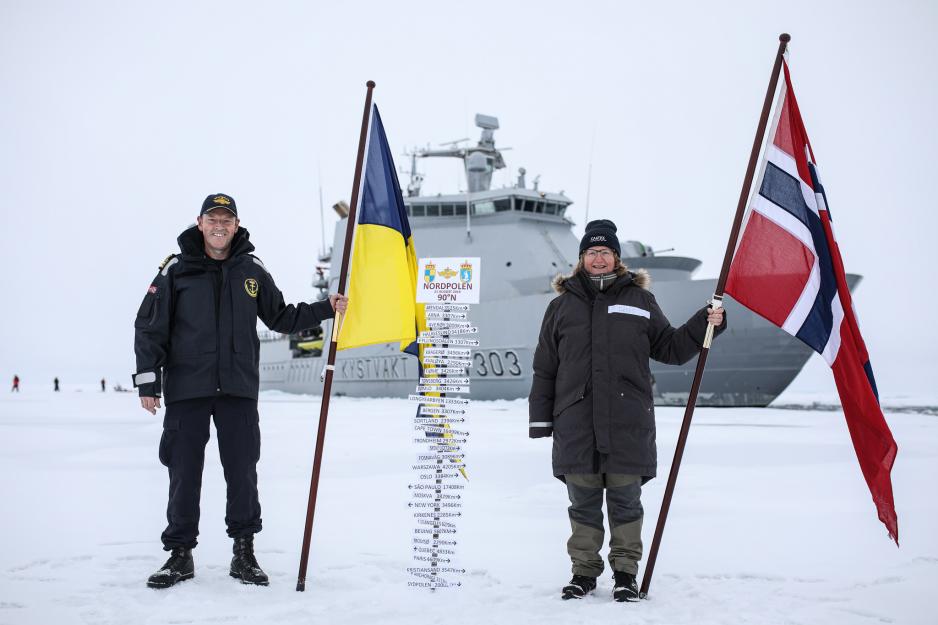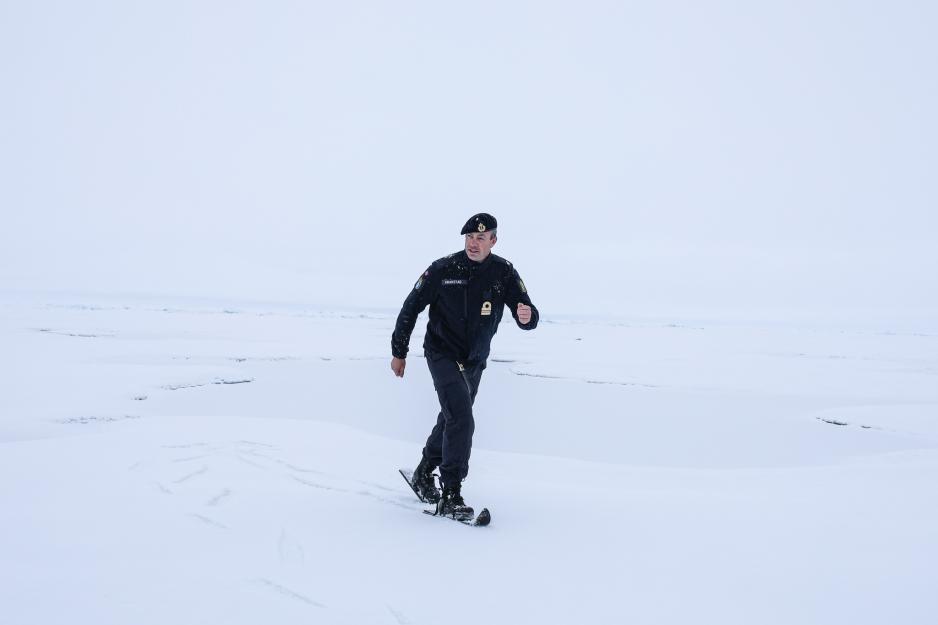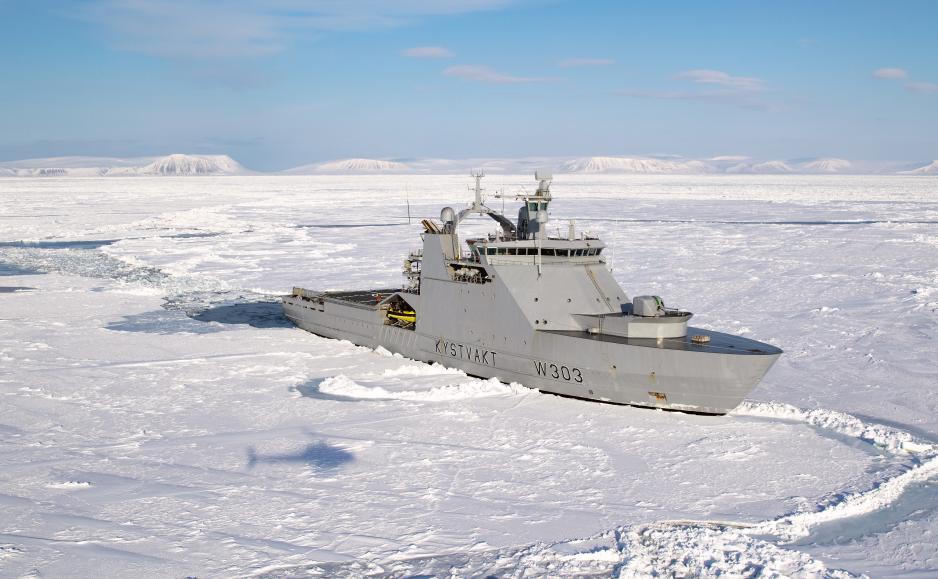KV Svalbard Sailed to the North Pole: - A Big Day for Norway

Vessel Chief Geir-Martin Leinebø and head of Caatex research mission Dr. Hanne Sagen photographed on the North Pole Wednesday afternoon. (Photo: Norwegian Armed Forces)
An international science expedition Wednesday reached the North Pole with the Norwegian coastguard’s vessel KV Svalbard. It is a strength for us that we are able to support polar research, says the Norwegian navy.
Wednesday morning at 09:32 CET, the Norwegian navy wrote history. KV Svalbard, which is currently on a research expedition in the Polar Sea with a series of Norwegian and international climate researchers onboard, reached the geographic North Pole – the northernmost point of the earth.
The ship spent for hours on the North Pole before the expedition headed south again. The purpose of the expedition is to map environmental development in the Polar Sea, says Head of Communications of the Norwegian navy, Commander Torill Herland.
- A series of scientists from Norwegian and international research communities are onboard. We have checked and cannot see that any other Norwegian vessel has been on the North Pole point before, so this is a big day for Norway, Herland says.
The Polar Sea
The Polar Sea is the sea surrounding the North Pole, demarcated by the northern coastlines of North American, Greenland, Europe and Asia, as well as Svalbard and Novaya Semlya north of Russia.
The Polar Sea itself is 7.26 million square kilometers big.
The first person to located excessive depths in the Polar Sea was Fridtjof Nansen, who during the Fram expedition drifting with the ice in 1893-1896 located depths down to 3,850 meters.
Later, American and Soviet polar stations on drifting icebergs and ice flakes, Soviet and American nuclear submarines as well as Arctic airborne expeditions have conducted extensive oceanographic work.
Source: Store norske leksikon (Norwegian online encyclopedia)
Eagerly awaiting first contact
Neither the navy nor the Nansen Center in Bergen, which coordinates the research expedition, had Wednesday afternoon spoken with the commanding officer nor others onboard the KV Svalbard due to poor communication conditions.
Everyone is now eagerly awaiting the first reports about how the situation is on the North Pole.
- The fact that the coastguard has now sailed to the North Pole – what does that signify?
- This says something about the capacities of the coastguard, that we have resources that can operate across the entire spectrum and in a variety of waters. The fact that we can contribute to supporting polar research is a strength to us, Herland says.
18 researchers from nine different institutions are onboard the KV Svalbard at present. The scientists are cooperating about gathering environmental data about the atmosphere, the sea ice and the ocean beneath the ice in the Arctic.
KV Svalbard was built in 2002 and is the only Norwegian navy vessel to hold icebreaking capacity. The vessel is specially designed for operating in Arctic waters.
With ice-reinforced hull, diesel electric power and deicing system, KV Svalbard can break one meter thick solid ice or up to four meters of fissured ice.

Deputy Commander of KV Svalbard, Anders Krakstad, skiing across the North Pole. (Photo: Norwegian Armed Forces)
Cooperation with the USA
The measurements are taken with direct measurements from the ship, drones, advanced drifting buoy systems, as well as vertical oceanographic rigs that are a kilometer long and will be left out at sea during the next year, according to an article on the Nansen Center’s home page.
Scientist Stein Sandven explains that the expedition is a cooperation with American scientists and that it aims to measure temperature changes in the Polar Sea.
- We are lowering deep-water buoys to around 4,000 meters’ depth. These are equipped with sensor sending measurements across all the Arctic and over to the Canadian basin, where American scientists are to lower similar equipment.
- What does it mean that one has now sailed to the North Pole?
- It means that the ice has grown thinner and that there is a greater chance for vessels with icebreaker capacity to sail across all the Arctic, not just to the North Pole point. KV Svalbard is one out of many expeditions, and the fact that we have now sailed to the North Pole point is probably more symbolic than a navigational challenge, Sandven says.

KV Svalbard at Svalbard earlier this year. (Photo: Hedvig Antoinette Halgunset/Norwegian Armed Forces)

